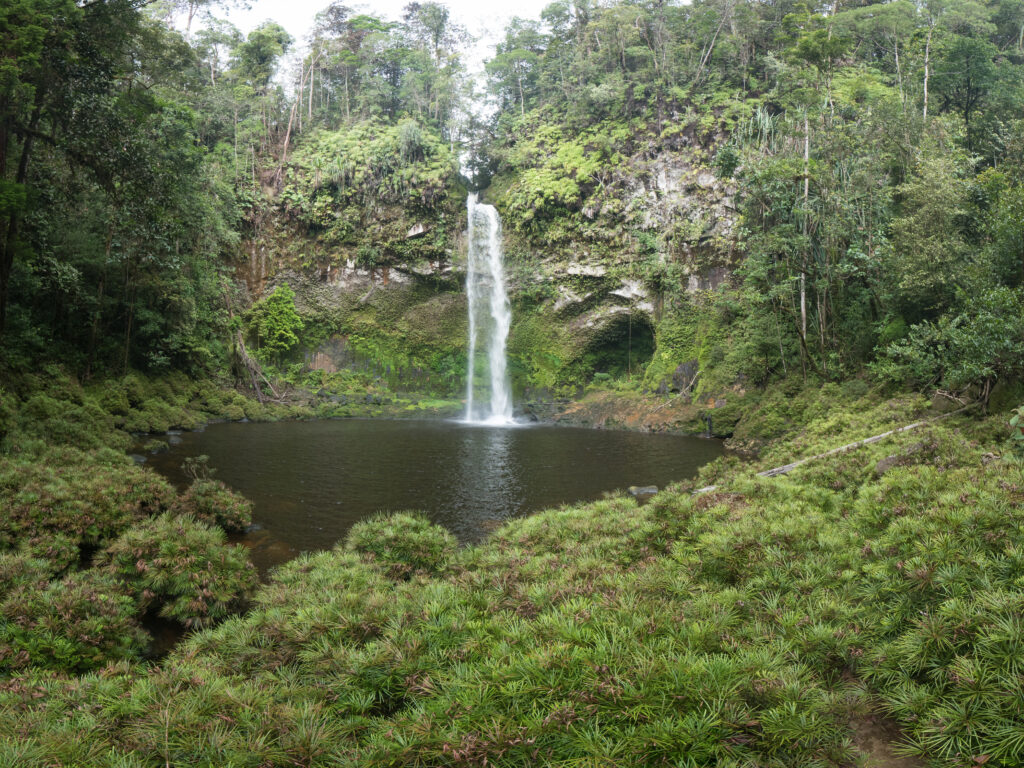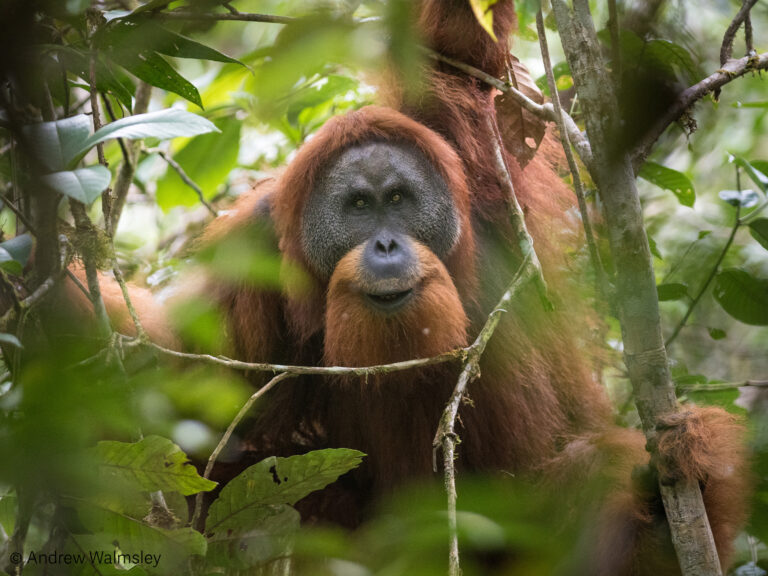Three different orangutan species
Prior to the description of the new species only two species of orangutans were recognised: The Sumatran (Pongo abelii) and the Bornean orangutan (Pongo pygmaeus). The new Tapanuli orangutan species is genetically, behaviourally and morphologically distinct from both its close relatives. An international team of scientists which included members of our Sumatran Orangutan Conservation Programme and the University of Zurich came to this conclusion after many years of fieldwork and genetic studies.
Critically endangered
Tapanuli orangutans can only be found in the Batang Toru ecosystem in the province of North Sumatra in IndonesiaThe species’ habitat is mostly rugged highland rainforest, totalling only around 1100 square kilometres. The orangutans and their habitat are also vulnerable to a number of threats. Increasingly people settle at the fringes or even in the rainforest itself. Most are neither aware of the ecological importance of the rainforest nor of the borders of protected areas, or the status of endangered animals. Poaching is still common and represents a serious problem for the Tapanuli orangutan and other protected species such as the Sumatran tiger or the pangolin, especially when numbers are already very low. Major infrastructure projects like mining concessions and electricity generating plants also represent a problem in the region. Not only do they often clear forest directly, they also open up new roads, creating new access for hunting and encroachment.
Our contribution
To make sure that what is considered the most endangered great ape species in the world has a chance to survive, its habitat has to be strictly protected. This is what the Batang Toru Conservation Programme, part of our larger Sumatran Orangutan Conservation Programme, is striving to achieve, with research stations, education and awareness for local communities and support to government to enhance habitat protection. Since we began working in the area in 2004 we succeeded in 2014 in increasing the status of more than 60% of the forest from production forest (available for logging) to protected forest status. We are also the only NGO that has been focussed consistently and continuously on conserving the Tapanuli orangutan during this time. Today 95% of the Batang Toru forest has protected status but still habitat fragmentation and encroachment at the forest edges continues. It is essential for the survival of such a small population that as many individuals as possible are able to interbreed and as the habitat is already fragmented into 3 main forest blocks, we need to develop corridors between them so the orangutans can cross. We remain committed to this cause – now more than ever!









